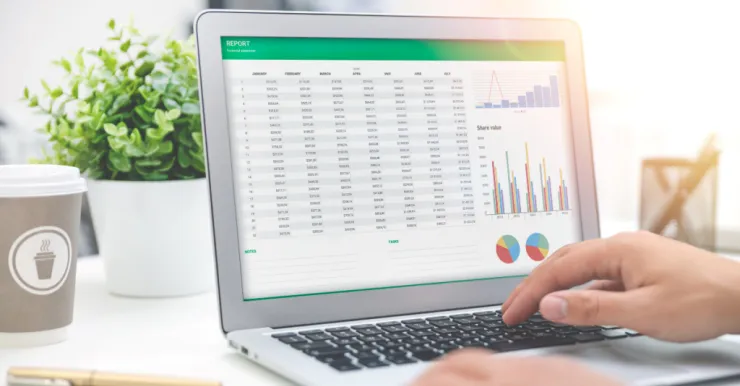5 important things to know about food delivery marketplaces
If you haven’t already jumped on the food delivery train, now is the perfect time to get started.
There are a number of ways to introduce a food delivery service in your restaurant. You can do it in-house and hire a fleet of delivery drivers. You can do it through a ‘last mile’ food delivery service integrated with your online ordering system. Or you can sign up with one of the food delivery marketplaces (also known as food delivery aggregators).
First though, you must do your due diligence. Often restaurants see third-party food delivery marketplaces as a quick and easy fix but don’t understand the very real and damaging implications of their decision. It pays to know exactly how they operate.
Here’s five important things to know about food delivery marketplaces.
1. You’ll need to pay them MORE money in marketing fees to get orders
Hang on a minute. They’ve told you that the reason you should pay their hefty order commission fees is because they’ve got loads of people ready and waiting to order your food. The orders will come flooding in, they say.
So why are they now asking you to spend MORE of your hard earned cash with them? It’s because you are one of thousands of brands all vying for the same customer eyeballs. They want you spending your hard-earned money to get to the top of the list.
One of the ways they plan to increase their take rate from restaurants in the short term is through marketing services. In other words, sell ad space on their platform. Restaurants can log into the platform, set a budget for how much they want to spend, and in return, they’ll get their brand pushed to the top of the feed, to give it more exposure.
But they’ve got a plethora of brands listed on their platforms - family-owned businesses, SMBs and huge multinationals. Guess who’ll win the battle to the top? Exactly!
Those huge multinational brands have a history of spending vast sums of money on advertising to get in front of customers. So where does this leave you in the fight for eyeballs? Spending more and more to get noticed on a platform that will then take up to a third of the order revenue in fees when you do get picked by the customer.

2. They’ve been aggressively acquiring restaurants for years
The food delivery aggregators have been aggressively signing up more and more restaurants over the past 5 - 10 years. That’s been their strategy. Get as many restaurants and takeaways onto their platforms as possible to build scale and volume.
You are one of thousands, no millions, of food businesses on their platform. You are a number. What they care about is your getting their hands on your revenue. They don’t care about your brand. Or your business growth. They want YOU making THEM money so that they can grow.
3. They make mistakes, you take the hit
One of the biggest issues for these platforms is handling refunds. The operational complexity of large food delivery marketplaces leaves plenty of room for error. The unit economics of these platforms is to have drivers doing as many deliveries as possible in a single hour.
But when the delivery driver gets lost on the way and the food arrives cold and soggy the customer is not happy. Often a delivery driver picks up multiple orders from multiple platforms in the same hour. Again, food arrives cold and soggy, the customer is not happy. The delivery driver gets stuck in traffic - food arrives late.
Refunds is a pretty significant line item for platforms. It’s estimated to be as much as 2 - 3% GMV (gross merchandise value). The marketplaces have been so focused on acquiring more restaurants that they haven’t spent the time on getting the customer experience as good as it should be.
But when things go wrong, who does the customer blame? You. That’s right. Your brand takes the hit. When, in fact, you did everything right.

4. They’re using your customer data to scale their businesses
The fee marketplaces charge restaurants for a delivery order is about 30%, on average. For collections, it’s typically between 15% - 20%.
So what are they doing with all the money? Often they’re using it to build their own food product. They are spending YOUR money to create kitchens that make the food.
But how do they know it’s something consumers will want? You’ve spent years perfecting your recipes. You’ve invested time and money into knowing what sells best. You know what your customers want to eat.
Well now they know it too because they have access to your data and your customers. They’ve been digging into YOUR customer data to develop the market insights they need to launch their own competing food product, list it on their platform and bump it up to the top.

5. They’re not bringing you new customers, they’re bringing you YOUR OWN customers
The food delivery marketplaces have done a great job of hoovering up restaurants into their platforms. So now what?
Their goal is to own the customer relationships. To grow, they need customers who were ordering 1 - 2 times per week to order more frequently.
For restaurants, the problem is that every time a customer repeat orders on a marketplace, that’s money that should be going directly to them. It’s your customer. They already know your brand. They love your food. You don’t need them to order on a marketplace. They can order directly from you.
When it comes to setting up a food delivery service for your restaurant it pays to do your homework first. Consider the long-term implications of listing your brand on a food delivery marketplace. Think about your customer relationships. Calculate the impact on your profit margins.


